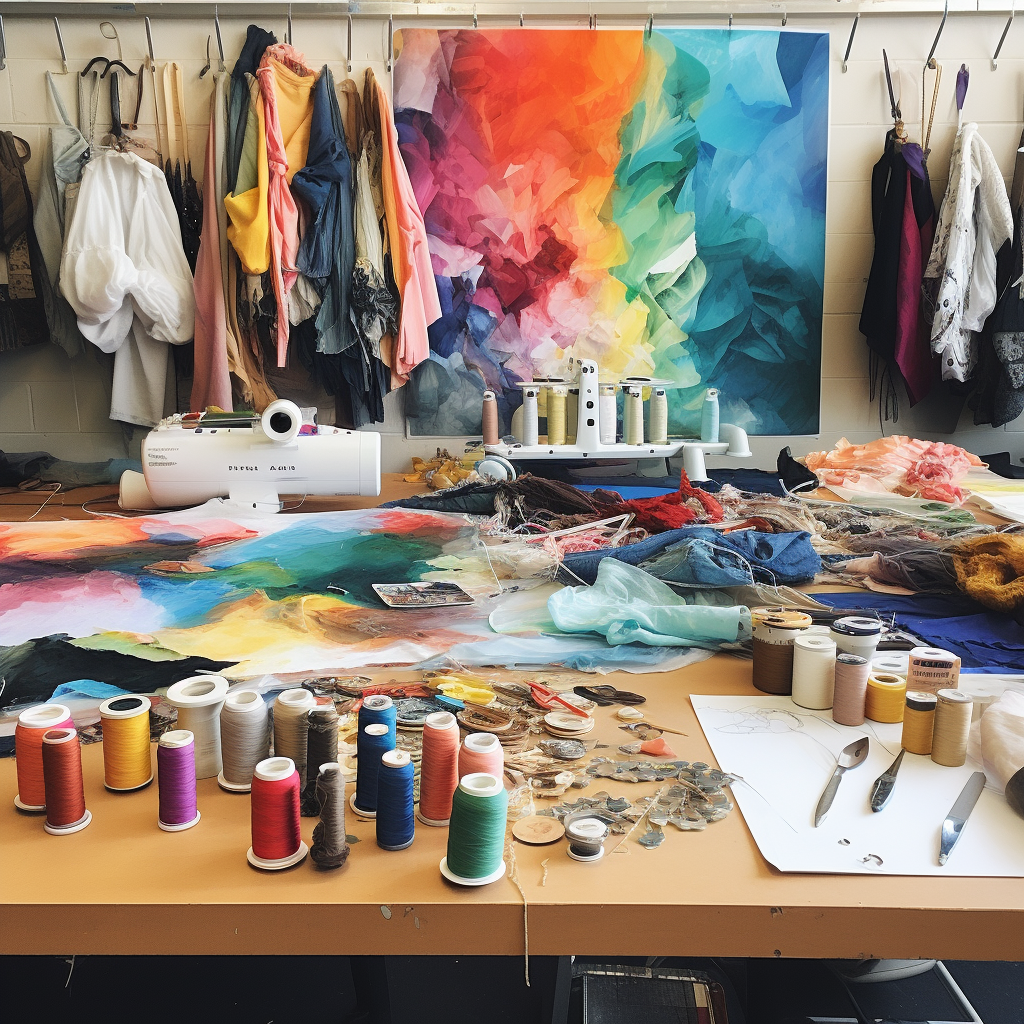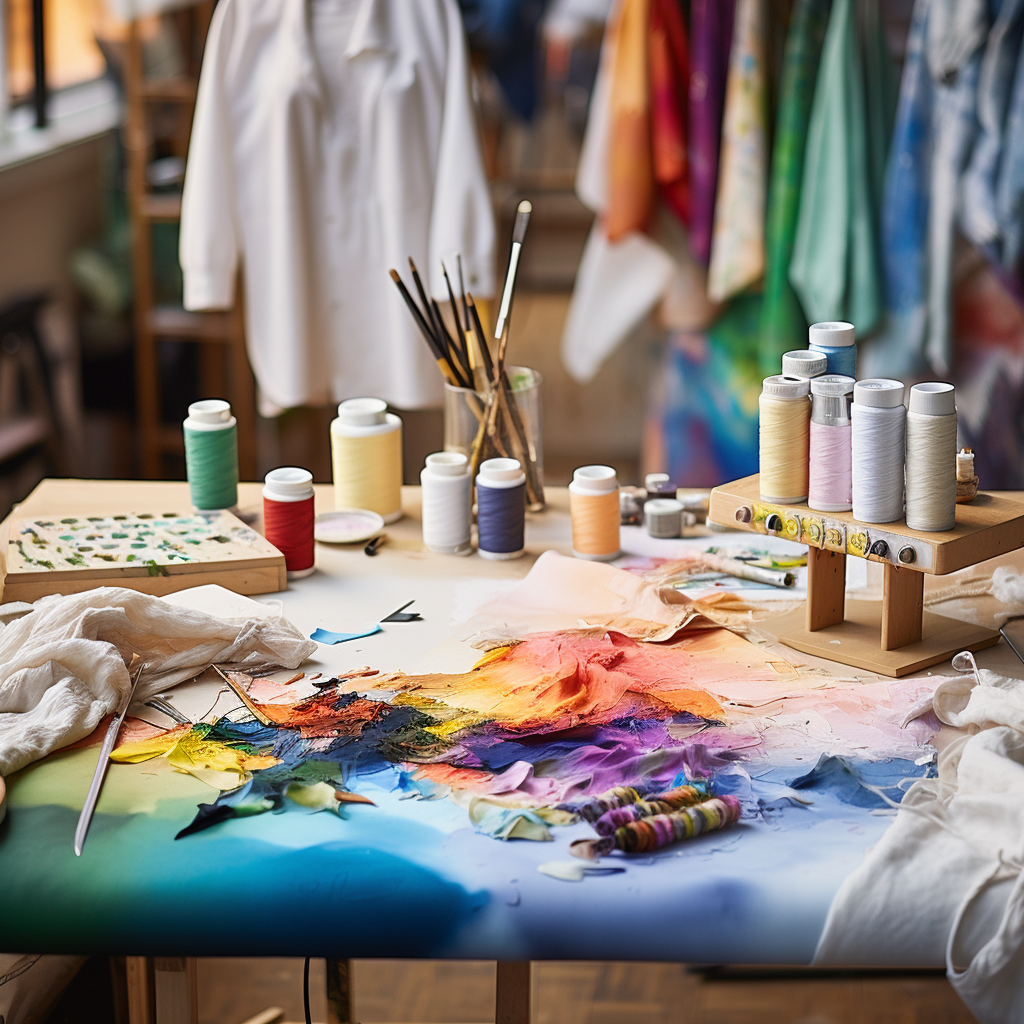Welcome to the enthralling world of garment making! If you’re here, you’ve likely felt the itch to create something beautiful and unique with your own hands. While the idea of crafting your own garments may seem daunting, rest assured—it’s a skill anyone can master. In this comprehensive guide, we’ll walk you through everything from selecting the right tools to mastering essential techniques. Along the way, we’ll sprinkle in expert advice, as well as data from trusted sources, to help you avoid common pitfalls. Our aim is simple: to provide a foundation sturdy enough for any aspiring garment maker to build upon. So, let’s delve into the universe of fabrics, needles, and imagination, shall we?
Why Learn Garment Making?
Personalization
How many times have you walked into a clothing store, only to find that nothing truly resonates with your personal style? Learning the art of garment making solves this issue by empowering you to create pieces tailored specifically for you. This level of personalization allows for endless possibilities in design, fabric, and fit. You’re no longer confined to what’s available on store racks.
Sustainability
The fashion industry is one of the largest contributors to global waste and pollution. According to the United Nations Environment Programme, the fashion industry is responsible for 10% of global carbon emissions and nearly 20% of wastewater. By creating your own garments, you contribute to sustainability. Homemade garments tend to last longer, and you can also repurpose old fabric, thereby reducing waste.
Cost Savings
Let’s talk numbers. A survey by Well+Good in 2019 revealed that the average American spends around $161 per month on clothing. Over the years, this amounts to a staggering sum. Investing in garment making can dramatically cut these costs. While there’s an initial investment for tools and materials, the long-term savings are considerable.

Essential Tools for Garment Making
Sewing Machine
A sewing machine is your primary tool in garment making. For beginners, a basic model with essential functions like straight stitch, zigzag stitch, and backstitch is sufficient. According to a 2021 Consumer Reports survey, the Singer Heavy Duty 4411 and Brother CS6000i are among the most recommended models for beginners due to their ease of use and versatility.
Cutting Tools
Sharp, high-quality cutting tools are crucial. A pair of fabric shears is mandatory for cutting fabric, while a pair of smaller scissors can handle thread and small trims. Rotary cutters are another option, especially for making straight cuts across large pieces of fabric.
Measuring Instruments
Precision is key in garment making. Tape measures, straight rulers, and L-shaped rulers can assist you in achieving this. A quality set of measuring tools ensures that you get accurate dimensions, contributing to a better fit and finish of your final product.
Miscellaneous
- Pins and Pincushion: To hold fabric pieces together before stitching.
- Seam Ripper: For undoing stitches that went awry.
- Chalk or Fabric Markers: For marking measurements or cut lines on your fabric.
All these tools play distinct roles in the process of garment making and investing in high-quality versions of these tools will pay off in the long run.
Fabric Selection and Preparation
Types of Fabrics
Choosing the right fabric is a pivotal step in garment making. Each material has its own set of properties that make it suitable for specific types of clothing.
- Cotton: Breathable and versatile, ideal for casual wear.
- Silk: Luxurious and lightweight, perfect for formal garments.
- Wool: Warm and breathable, great for winter clothing.
- Polyester: Durable and moisture-wicking, often used in sportswear.
It’s important to consider your garment’s intended use when selecting fabric. For instance, the International Fabric Market Association reports that 60% of summer clothing is made from cotton due to its breathability.
Pre-washing
This is a step many beginners overlook, but it’s crucial. Different fabrics have different shrinkage rates, and pre-washing can help you understand how your fabric will behave. For example, cotton fabrics can shrink up to 3%, according to data from the Cotton Incorporated Lifestyle Monitor™ Survey. So, washing your fabric before you start cutting and sewing is a must.
Fabric Care
Understanding how to care for your chosen fabric will increase the longevity of your final garment. Read the manufacturer’s guidelines for washing, drying, and ironing.
Color and Print
Lastly, don’t forget to consider the aesthetics. Patterns and colors can change the whole look of a garment. Make sure you select something that aligns with your vision but also follows the general rules of design and color theory.

Understanding Sewing Patterns
Reading a Sewing Pattern
For those new to garment making, sewing patterns can seem like cryptic blueprints. However, learning to decipher them is crucial. Patterns offer vital information such as seam allowances, fabric suggestions, and cutting instructions. Most commercial patterns come with a guidebook that explains the symbols and lines.
Alterations
Once you get the hang of reading patterns, you’ll likely want to tweak them to suit your preferences. Maybe you want to lengthen a skirt or adjust the waistband. Understanding the basics of pattern grading, which is the method for resizing a pattern, can be immensely useful here. The Pattern Making Association notes that simple adjustments can make a significant difference in how a garment fits and feels.
Digital vs. Paper Patterns
Both have their merits. Paper patterns are tactile and can be adjusted easily with basic tools like a pencil and ruler. Digital patterns are convenient and can be resized using software. According to a 2020 report from the Craft Industry Alliance, digital patterns have seen a surge in popularity, with a 35% increase in sales over the last three years.
Symbols and Markings
Don’t ignore the small details on your pattern. Notches, darts, and grain lines are all integral to how your garment will come together. Each symbol is an instruction that guides you on aspects like where to fold, where to stitch, and in what direction to align your fabric.
Basic Garment Making Techniques
Seaming
Seams are the backbone of any garment, and understanding different types of seams can give you a professional finish. The two fundamental seams you should know are:
- Plain Seam: The simplest and most commonly used, consisting of two fabric pieces stitched together.
- French Seam: A cleaner, concealed seam ideal for sheer and lightweight fabrics.
Each type has its applications, and knowing when to use which is crucial. A study by the Textile Research Journal indicates that seam strength can vary by up to 35% depending on the type of seam used.
Hemming
A hem is a finishing technique to prevent the raw edge of the fabric from fraying. Basic types of hems include:
- Double-fold Hem: Fold the fabric edge twice before stitching; suitable for most fabrics.
- Blind Hem: A discreet hemming technique often used in formal garments.
Zippers and Buttons
Fastenings like zippers and buttons may seem daunting, but with practice, they become manageable.
- Zippers: Always remember to stabilize the fabric with interfacing to prevent puckering.
- Buttons: Make sure the buttonhole is the right size for the button, generally 1/8 inch larger than the button’s diameter, according to the Sewing Educators Alliance.
Pressing
Never underestimate the power of a good press. Pressing your seams open or to one side can drastically improve the appearance of your garment. A survey from Sewing World Magazine emphasized that 67% of experienced garment makers consider pressing to be as crucial as the sewing itself.
Common Mistakes to Avoid
Fabric Mismatch
Choosing the wrong fabric for your project can lead to disappointing results. A 2018 report from the Textile Institute emphasized that fabric choice impacts not just appearance, but durability and comfort as well. Always match your fabric to the intended use of the garment.
Measurement Errors
One of the most frustrating mistakes is realizing your garment doesn’t fit well because of inaccurate measurements. A study by the International Journal of Fashion Design highlights that measurement errors are among the top challenges faced by beginner garment makers.
Skipping Pre-washing
As discussed earlier, skipping the pre-wash step can result in unexpected shrinkage or color bleeding. It’s a small step but one that can save your project from disaster.
Ignoring the Grain Line
Not aligning your fabric correctly according to the grain line can result in a garment that doesn’t hang well. The grain line is usually marked on the pattern and should be parallel to the selvage of the fabric.
Overlooking Pressing
In the zeal to complete a project, one might overlook the pressing stage. However, as stated in Chapter 6, failing to adequately press your garment can result in a less polished final product.

Tips for Skill Improvement
Practice, Practice, Practice
Just like any other craft, the more you sew, the better you get. Setting aside regular time to practice your sewing can lead to rapid improvement. As highlighted in a 2019 study from the Journal of Adult Education, consistent practice is crucial for skill acquisition in any domain, including sewing.
Take Classes
Whether it’s an online tutorial or an in-person workshop, taking structured classes can provide you with targeted learning experiences. Websites like Skillshare and Udemy offer comprehensive courses that cover everything from basic stitches to advanced garment construction.
Join Communities
A strong support network can be invaluable as you refine your craft. Online forums like Reddit’s r/sewing or dedicated Facebook groups offer a community of like-minded individuals who can provide tips, inspiration, and feedback.
Experiment
Don’t shy away from attempting new techniques or working with unfamiliar fabrics. Experimentation is the mother of innovation. A survey by the Home Sewing Association revealed that 73% of experienced sewists believe experimenting with different materials and techniques significantly enhanced their skills.
Review and Reflect
Once you complete a garment, take some time to review your work critically. Look for areas where you could improve or techniques you found challenging. This reflective practice will provide you with invaluable insights for your next project.
Conclusion: Sewing Your Way to Mastery
Congratulations on taking the first steps towards mastering the intricate and rewarding craft of garment making! From understanding the essential tools to mastering the art of pattern reading, from the nuances of fabric selection to the detailed techniques that make your creations shine, you’ve covered substantial ground. This journey is one of both skill and creativity, where each stitch is a building block towards becoming an accomplished garment maker.
Remember, expertise doesn’t happen overnight. As highlighted in the Journal of Adult Education, consistent practice is invaluable. Use this guide as a foundation and don’t hesitate to venture further, whether it’s by taking specialized classes, joining sewing communities, or diving into more complex projects.
The pitfalls and challenges are just stepping stones in your garment-making adventure. Each mistake is a lesson, and each success is a milestone. The world of garment making is vast and ever-evolving, and there’s always something new to learn and create.
Thank you for joining us on this comprehensive exploration of garment making. Here’s to many fruitful and fulfilling hours spent at your sewing machine!
References
- Consumer Reports. (2021). “Best Sewing Machines for Beginners.” Consumer Reports Magazine.
- International Fabric Market Association. (2020). “Fabric Choices in Summer Clothing.”
- Cotton Incorporated Lifestyle Monitor™ Survey. (2019). “Fabric Shrinkage Rates.”
- Pattern Making Association. (2018). “The Importance of Pattern Grading.”
- Craft Industry Alliance. (2020). “The Rise of Digital Sewing Patterns.”
- Textile Research Journal. (2017). “A Study on Seam Strength in Fabrics.”
- Sewing Educators Alliance. (2019). “Buttonhole Sizing Guidelines.”
- Sewing World Magazine. (2020). “The Importance of Pressing in Garment Making.”
- The Textile Institute. (2018). “Impact of Fabric Choice on Garment Durability.”
- International Journal of Fashion Design. (2019). “Top Challenges in Beginner Garment Making.”
- Journal of Adult Education. (2019). “The Role of Consistent Practice in Skill Acquisition.”
- Home Sewing Association. (2020). “Survey on the Benefits of Experimentation in Sewing.”